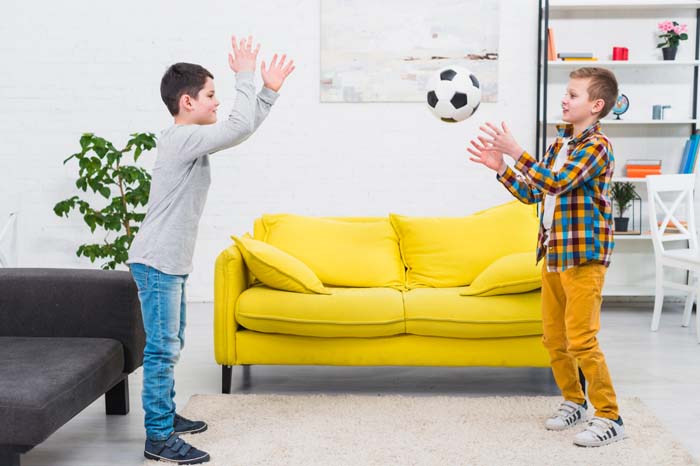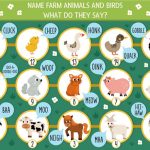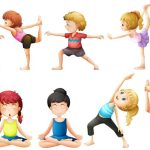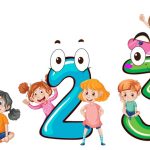There are some kids who just seem to be born with a knack for things like catching a ball, playing an instrument, or making complex crafts. On the other hand, some kids struggle with some activities. This is where hand-eye coordination comes into the picture!
Some perform a plethora of tasks with ease and precision, whereas some struggle to coordinate their movements. This is where hand-eye coordination comes into picture! If you are wondering about its importance, let us tell you that hand-eye coordination is extremely important for learning and performing a diverse set of tasks, including those that entail physical, mental, and social activities. Because of it, we are able to interpret visual information and direct the actions of our limbs and other bodily parts. In this blog, we’ll go through a list of fun and educational hand-eye coordination games and exercises for kids.
All of us want to see our children develop important life skills early in life, don’t we?
Hand-eye coordination and the part it plays in child development
For many tasks that require both mental and physical exertion, hand-eye coordination is essential. Our ability to smash a ball, play an instrument, or even just hold a pen or pencil requires us to have good hand-eye coordination. Hand-eye coordination is especially important for kids as it helps them develop gross and fine motor skills, which are required for myriad activities like eating, drawing, and allows children to participate in games and activities with their peers, which aids in the development of relationships and promotes teamwork.
Parents, after having read the benefits, don’t you think it is upon us to encourage children to indulge in hand-eye coordination activities?
A list of hand-eye coordination games and activities
These eye-hand coordination activities for kids and games are quick and easy to do, and they train the brain’s ability to coordinate the hands and eyes at the same time.
A child’s motor development is greatly aided by engaging in these types of activities on a regular basis, and it will also help them as they begin to learn to read and write.
So, here is a list of carefully curated hand-eye coordination activities and games are super fun!
Catch and toss
A classic game that can be played with a ball or any other object is catch and throw. Children alternate throwing and catching the object while facing each other. They can increase the distance between them as they progress to make the game more difficult. Children must track the movement of the object and time their movements to catch it, making catch and throw an excellent activity for developing hand-eye coordination. This game also enhances children’s ability to predict and react to the speed and trajectory of the object, fostering better anticipation skills. Moreover, it’s a great way for children to learn about turn-taking and patience, as they wait for their turn to throw or catch.
Stacking Cups
Cup stacking is a popular sport or activity that requires agility, speed, and hand-eye coordination. The game’s goal is to stack and unstack a set of cups as quickly as possible. Children must move the cups with their hands and track their movements with their eyes. Cup stacking is an excellent way to improve hand-eye coordination and reaction time. It also promotes the development of sequential planning and strategy, as children learn the most efficient ways to build and deconstruct their cup pyramids. This activity can also enhance focus and concentration, as precise movements are essential for success.
Threading and lacing
Both are great activities for young children that help in improving hand-eye coordination. Threading means putting a thread through a needle’s hole or eye, whereas lacing is the process of weaving a string or lace through holes or loops in a pattern. For both threading and lacing, kids have to keep their eyes on the target and move the thread or string carefully so it goes through the target correctly. Because these activities require the use of small muscles in the hands and fingers to hold and manipulate the thread or string, they also help improve fine motor skills. These activities also teach children the concepts of pattern creation and following sequences, enhancing their cognitive skills. Additionally, they provide a sense of accomplishment and can improve children’s patience and persistence.
Sandpit toys
Sandpit toys, such as shovels, buckets, and molds, are excellent tools for helping children develop hand-eye coordination. Sandplay is a sensory activity in which children manipulate and mold sand to help them develop their tactile and fine motor skills. To complete the task successfully, children can use shovels to scoop sand and transfer it to a bucket or mold, requiring hand-eye coordination and accuracy. Playing in the sand with accessories such as shovels, buckets and molds helps children to get creative and also identify and experiment with various shapes, patterns, and textures. Sandplay is one of the more convenient activities and it also doesn’t involve money as it can be played in the garden, park or a nearby beach. This type of play not only boosts creativity but also teaches children about physical properties like texture, weight, and volume, offering a foundational understanding of basic scientific concepts.
Bounce & Catch
Bounce and catch is a fun and challenging sport that can improve hand-eye coordination and reaction time. Children face each other and bounce and catch a ball in turns. As the game goes on, the little ones could increase the speed and height of the bounce to make the game more exciting! Bouncing and catching is an excellent activity for developing hand-eye coordination because children must track the movement of the ball and time their movements to catch it. This game also encourages physical fitness and agility as children move to align themselves with the bouncing ball. It fosters a sense of rhythm and timing, essential skills for many sports and physical activities.
Blackboard and chalk
For ages, blackboards and chalk have been used to teach children and develop their hand-eye coordination. When kids write or draw on a blackboard, they have to use their eyes to focus on the target and their hands to move the chalk to write clearly and legibly. Because it requires the use of small muscles in the hands and fingers to hold and manipulate the chalk, this activity helps to develop fine motor skills. Children are at their creative best when they write or draw on a blackboard. Isn’t erasing and starting over the best part of writing or drawing on a blackboard? Of Course it is as it encourages them to practice and refine whatever it is that they are doing. This process also introduces them to the concept of trial and error, learning from their mistakes and improving their skills over time. Additionally, it can be a collaborative activity, promoting social interaction and teamwork as children work together on a shared drawing or writing project.
Finger Painting
Finger painting requires a high level of coordination and control to manipulate paint on a surface with the fingers. The child must use their eyes to track their movements and adjust their hand movements while painting to achieve the desired result. Finger painting is another sensory activity that can help children develop their tactile skills as they experiment with various textures and colours. Furthermore, as children experiment with different shapes, patterns, and color combinations, finger painting can help them develop their creativity and imagination. Finger painting has proven to be one of the most fun hand-eye coordination activities. It also allows for the expression of emotions and ideas through art, offering a therapeutic and stress-relieving outlet for children. Engaging in this activity can enhance children’s understanding of color theory and mixing, further enriching their artistic skills.
Building blocks or lego
This requires children to use their eyes to focus on the target and their hands to precisely manipulate the blocks or Lego pieces.
To hold and manipulate the blocks or Lego pieces, children must use small muscles in their hands and fingers. Furthermore, building blocks and Lego can help children develop spatial awareness and visual perception skills as they learn how different pieces fit together to form a structure. Building with blocks or Lego also fosters problem-solving and creative thinking as children figure out how to construct their creations.
This activity also provides an opportunity for children to engage in storytelling and role-playing as they create scenes and scenarios with their constructions, enhancing their language and social skills.
After having gone through the blog, we are sure that you must have realized the importance of hand-eye coordination in a child’s life. Hand-eye coordination activities and games can help children improve this skill in a fun and engaging way. Based on the pillars of mindful learning, spaced learning and blended learning, EuroKids encourages your children to participate in these activities so that they can have fun while improving their hand-eye coordination.
Do visit your nearest EuroKids centre to understand the carefully curated curriculum in detail!
















